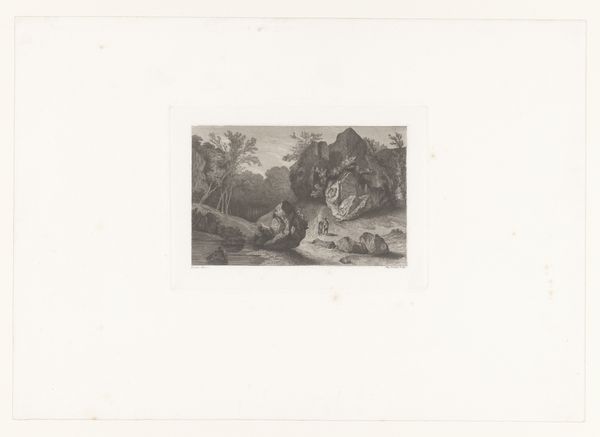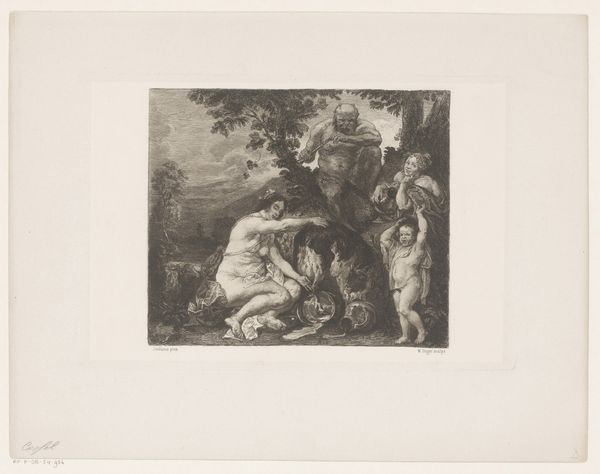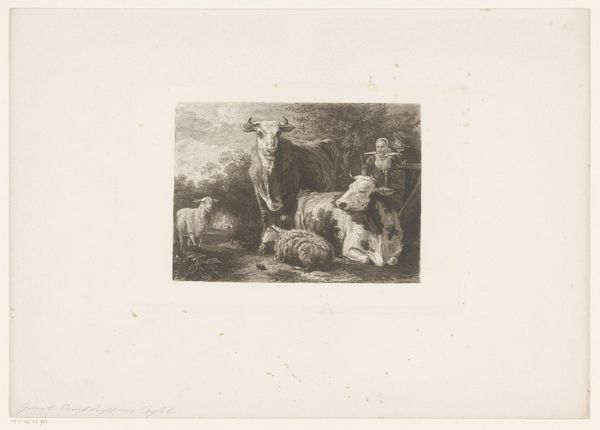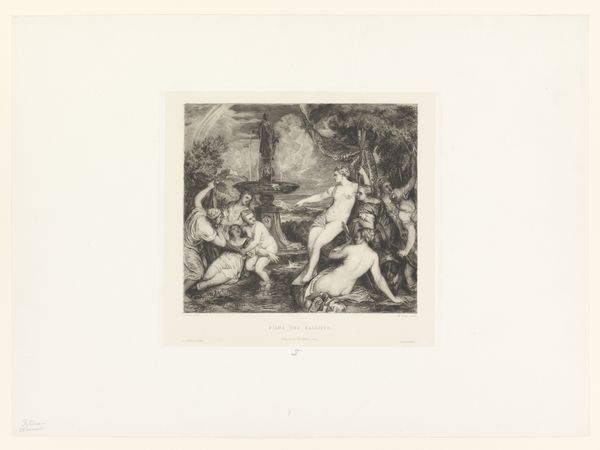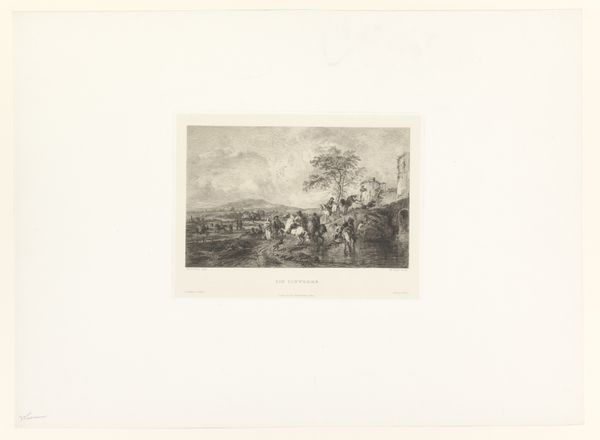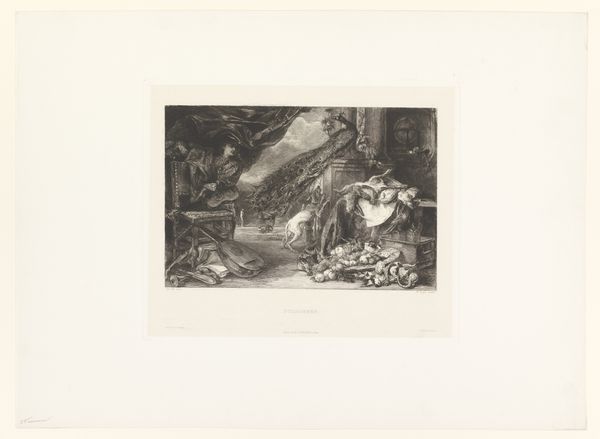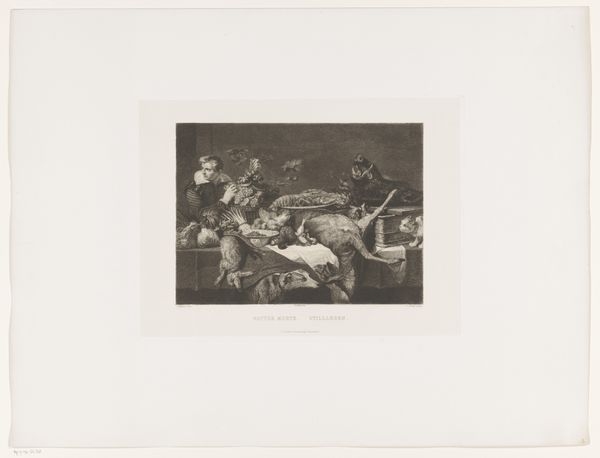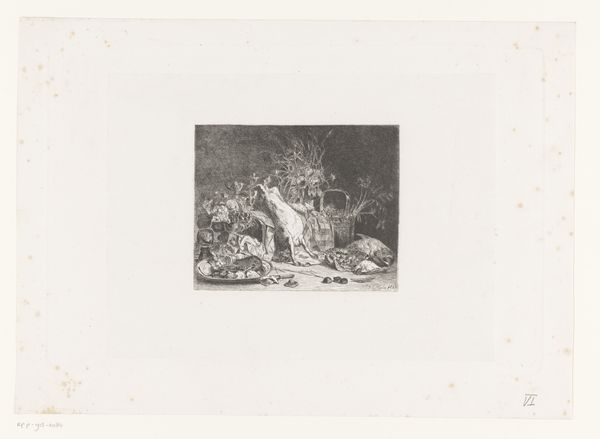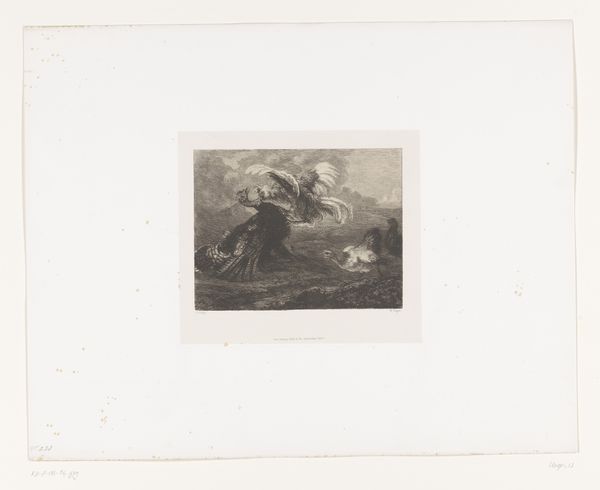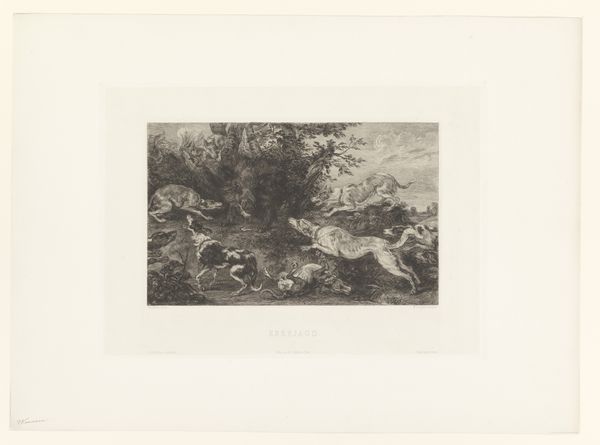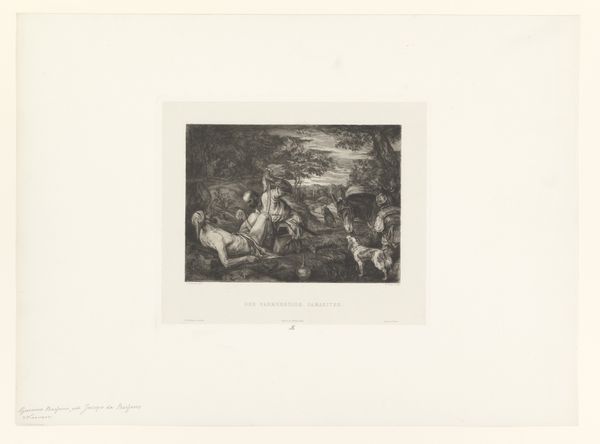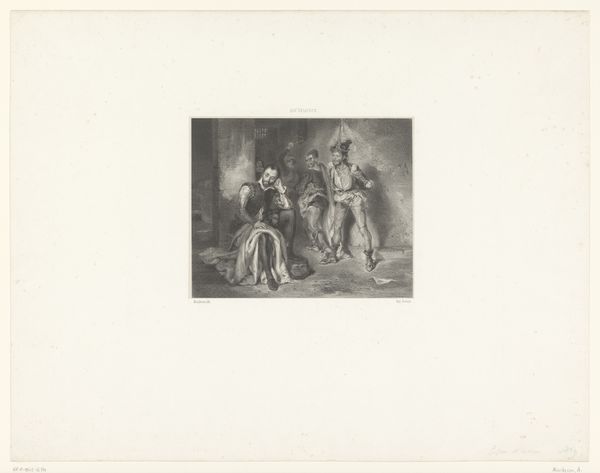
tempera, print, engraving
#
narrative-art
#
tempera
# print
#
landscape
#
figuration
#
history-painting
#
engraving
#
christ
Dimensions: height 219 mm, width 380 mm
Copyright: Rijks Museum: Open Domain
This is William Unger's etching, "Christus en de Samaritaanse vrouw". Unger was a Dutch printmaker who lived from 1837 to 1932. Here, Unger illustrates a well-known scene from the Gospel of John. Jesus, seated at a well, speaks to a Samaritan woman, offering her "living water". In Unger's time, the Netherlands was a deeply religious society, divided along lines of Protestant and Catholic, liberal and conservative. Unger renders the scene in a classical style. The composition is balanced, and the figures are idealized. This aesthetic choice reflects Unger's training in academic art, which emphasized technical skill and adherence to established artistic conventions. But the subject matter itself is a challenge to social convention. Jesus, in speaking with a Samaritan woman, crosses social boundaries. Similarly, the print medium itself, as a means of distributing images widely, challenges the traditional art world. To fully understand Unger's work, we can consult sources like exhibition catalogs and period reviews. These help us understand how his art was viewed by his contemporaries. Art is always rooted in a specific time and place.
Comments
No comments
Be the first to comment and join the conversation on the ultimate creative platform.
